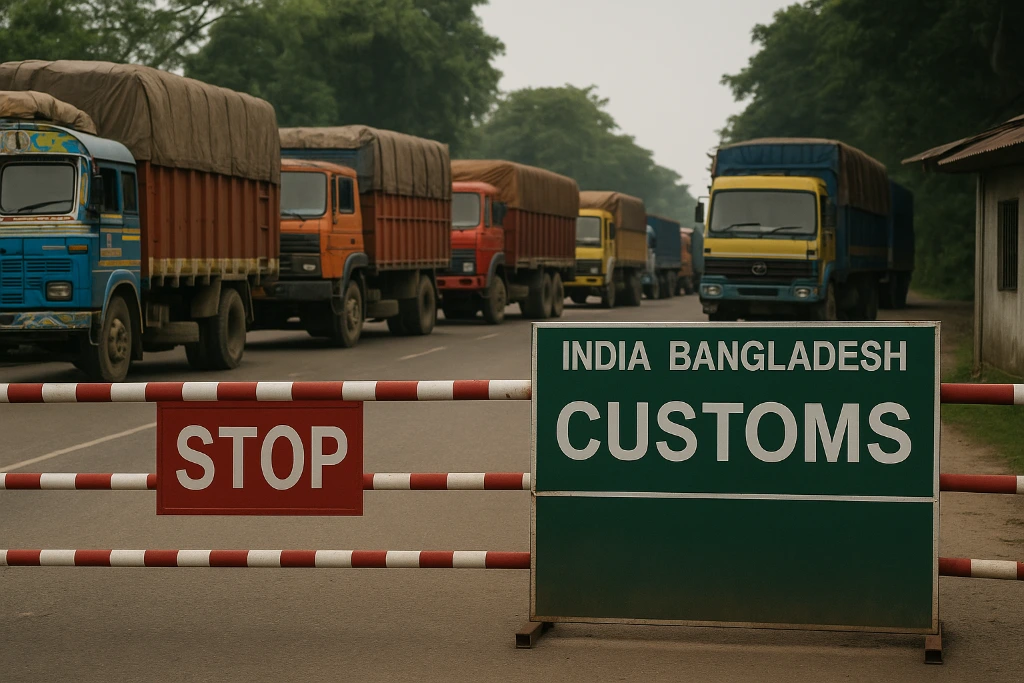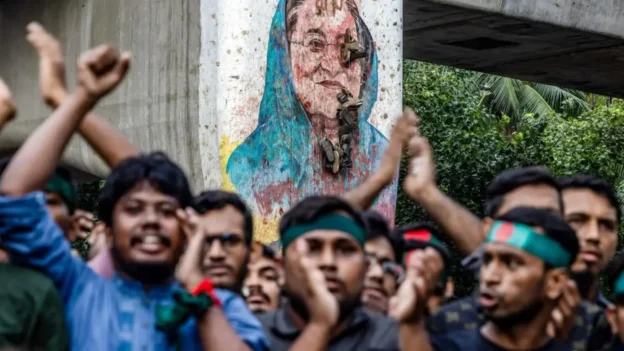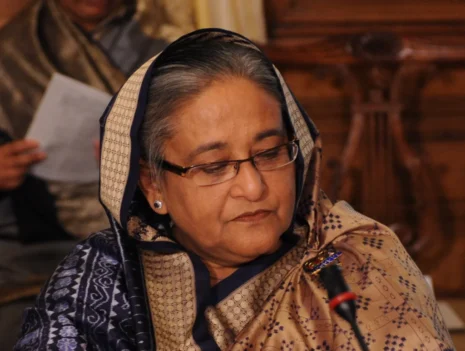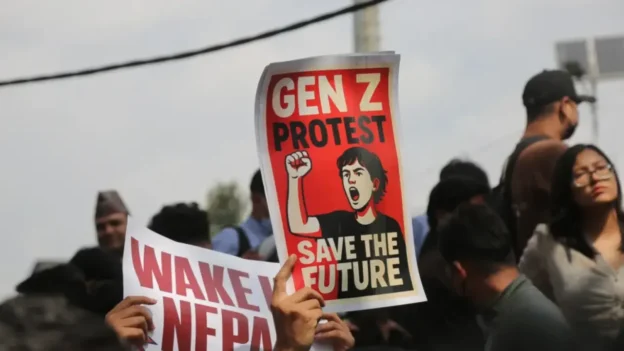India’s decision to bar the entry of Bangladeshi ready-made garments and several consumer goods through its northeastern land ports marks a significant shift in bilateral trade policy, revealing a deeper undercurrent of strategic, economic, and diplomatic tensions. While the official notification issued by India’s Directorate General of Foreign Trade came into effect on Saturday, the move is not an isolated trade decision—it is layered with retaliation, long-simmering grievances, and growing concerns over Dhaka’s shifting postures towards China and India’s sensitive Northeast.
The immediate trigger: A trade retaliation
The first and most visible provocation that appears to have triggered New Delhi’s swift decision was Dhaka’s unilateral closure of land ports to Indian yarn exports starting April 13, 2025. This action severely disrupted supply chains critical to Indian textile mills, especially those producing dyed and value-added yarns. Yarn exports to Bangladesh constitute nearly 30 percent of India’s textile trade to the country, and the restriction prompted Indian exporters to scramble for alternative routes such as container shipping and inland waterways. With diplomatic efforts yielding no resolution, India responded with a calculated trade countermeasure—cutting off land port access for Bangladesh’s core export sector: ready-made garments (RMG).
The restrictions are significant. India has now limited Bangladeshi RMG imports to only two ports—Kolkata and Nhava Sheva—effectively shutting out all 11 land customs points in the Northeast, including those in Tripura, Assam, Meghalaya, Mizoram, and West Bengal’s Phulbari and Changrabandha. The impact on Dhaka is immediate and severe: over 93 percent of Bangladesh’s RMG exports to India, worth nearly $700 million annually, pass through these land ports. Added to this, several other key Bangladeshi exports—including plastics, processed food, carbonated drinks, cotton, and wooden furniture—will also face the ban.
A growing pattern of diplomatic friction
Beneath the surface of retaliatory trade steps lies a more troubling strategic concern. Indian policymakers have grown increasingly wary of the interim regime in Dhaka, particularly its rhetorical provocations and overtures to China. Statements by Chief Advisor of the Bangladesh interim government, Muhammad Yunus have irked Indian officials, not merely for their economic proposals but for their geopolitical framing. In recent interactions with Chinese officials, Yunus described India’s Northeast as “landlocked” and pitched Bangladesh as its “only guardian of the Ocean,” while suggesting a China-Bangladesh economic integration model that includes India’s Northeast—without any consultation with New Delhi.
While cloaked in the language of regional cooperation, Yunus’s comments were seen in India as a brazen diplomatic overreach, challenging India’s sovereignty and territorial sensitivity. The invocation of the “Chicken’s Neck”—India’s narrow Siliguri Corridor linking the Northeast to the rest of the country—triggered further alarm, especially amid India’s rising security concerns over growing Chinese influence in South Asia.
The alarm was amplified by incendiary remarks from other senior Bangladeshi figures. Major General (Retd) A.L.M. Fazlur Rahman recently floated the outrageous idea that Bangladesh, with China’s support, could occupy the seven northeastern Indian states if India attacked Pakistan. Though dismissed as fringe rhetoric, such statements, along with social media visuals of redrawn maps showing parts of India included within a “Greater Bangladesh,” are feeding growing apprehension in Indian strategic circles about the interim government’s orientation.
Unequal trade and a shifting economic reality
Even before these recent tensions, trade between India and Bangladesh—particularly through the Northeast—was seen by Indian officials as increasingly unequal. Despite the region’s proximity and natural trade linkages, Bangladesh has imposed high transit charges, rigorous inspections, and arbitrary restrictions that have hurt Indian exporters. For instance, since mid-April, Indian rice exports have faced blockades at key Integrated Check Posts (ICPs), and goods from the Northeast have often been limited to primary agricultural items, unable to compete due to restrictive Bangladeshi policies.
Bangladesh, on the other hand, has enjoyed relatively free access to Indian northeastern markets, leading to an asymmetrical trade relationship. From packaged foods and textiles to plastics and processed goods, Bangladeshi products have moved with little restriction into the Northeast, making it a vital economic lifeline for Dhaka’s exporters.
India’s Northeast has long been a lucrative market for Bangladeshi goods. According to a 2022 South Asia Monitor report, Bangladesh’s exports to the Northeast shot up from 40 crore Bangladeshi taka in 2018–19 to over 367 crore in 2019–20. Imports from the region stood at 390 crore taka, comprising items like coal, ginger, onions, textiles, petroleum products, and minerals. Meghalaya alone exported nearly 7.5 million metric tonnes of coal annually to Bangladesh before the NGT ban on rat-hole mining. This robust and mutually beneficial trade is now at risk.
Geopolitical gambits amid domestic crisis
Observers suggest that Yunus’s aggressive posturing may be influenced by Bangladesh’s deteriorating economic conditions and diplomatic isolation. Since the ouster of Sheikh Hasina’s government in August 2024 following mass protests, the interim regime has struggled to stabilise the economy. Inflation has hit record highs, over 200 garment factories have shut down, unemployment has soared, and Western aid—including from the UN, EU, and United States—has dried up. In this backdrop, Yunus appears to be pivoting eastwards, courting China in hopes of economic rescue and regional clout.
Critics within Bangladesh have called Yunus’s comments on Northeast India “miscalculated,” accusing him of jeopardising a critical trade corridor in pursuit of short-term political positioning. His overtures to Beijing—especially invoking India’s strategic vulnerabilities—are likely to backfire, as they only reinforce New Delhi’s resolve to limit exposure to an unstable and potentially antagonistic neighbour.
A turning point for the Northeast
The new restrictions come with a larger goal: economic rebalancing. Indian officials stress that these measures align with the country’s ‘Atmanirbhar Bharat’ initiative, aimed at reducing dependence on external suppliers and promoting indigenous manufacturing in the Northeast. While the immediate impact will disrupt local traders and manufacturers who rely on Bangladeshi imports, New Delhi hopes that curbing unrestricted access will create space for local industries to flourish and diversify exports beyond low-value primary goods.
The Northeast has historically played a supportive role in Bangladesh’s growth—from sheltering refugees during the 1971 Liberation War to supplying energy and raw materials. But Dhaka’s recent provocations, coupled with a consistently unequal trade arrangement, have pushed New Delhi to reassess the terms of this relationship.
Going forward, Bangladesh will need to re-evaluate its strategic priorities and diplomatic messaging. The country’s geographic proximity to the Northeast is an advantage, but not a license for one-sided benefit or inflammatory rhetoric. India has signalled that goodwill is not infinite, especially when national security and regional integrity are at stake.







